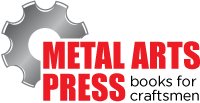- Preface
- Acknowledgements
- Chapter 1: Welding Overview
- Chapter 2: Safety
- Chapter 3: Terms, Joints, & Edge Preparation
- Chapter 4: Tools & Welding Tables
- Chapter 5: Shielded Metal Arc Welding
- Chapter 6: Wire Feed Welding
- Chapter 7: Gas Tungsten Arc Welding
- Chapter 8: Oxyacetylene
- Chapter 9: Controlling Distortion
- Chapter 10: Cutting Processes
- Chapter 11: Brazing & Soldering
- Chapter 12: Common Problems & Solutions
- Chapter 13: Design Tips
- Chapter 14: Fabrication & Repair Tips
- Chapter 15: Tools & Tooling
- Chapter 16: Pipe & Tubing
- Chapter 17: Metallurgy
- Chapter 18: Power Supplies & Electrical Safety
- Chapter 19: Bending & Straightening
- Index
- Credits
Preface
Most people don’t read prefaces, but I encourage you to make this one the exception. I guarantee that it has no highfalutin’ philosophy or history that no one cares about. This preface is actually useful.
What This Book Is About
This book is about welding, cutting, and brazing.
Welding Know-How takes an in-depth look at the four most common welding processes—oxyacetylene, stick, wire-feed and TIG—and describes how each process works, its equipment, applications, advantages, start-up and shutdown procedures, along with welding techniques and troubleshooting.
The book also covers the five most used metal cutting processes—oxyacetylene, plasma arc, shielded metal arc cutting, air carbon arc, burning bar and oxygen lance cutting—including their equipment, applications and techniques.
In addition, the book features the equipment, materials, and processes for brazing and soldering, including brazing methods for steel, aluminum, stainless steel, cast iron and tungsten carbide. Welding Know-How compares the advantages of silver brazing, bronze brazing and several solder alloys. Step-by-step brazing and soldering instructions for sweating copper tubing are there too.
Welding Know-How features dozens of helpful projects, repair techniques and solutions to common welding problems. This book will teach you how to make special-purpose tools, improve commercial tools, and build welding fixtures.
Who This Book Is For
This book is for anyone who desires a basic knowledge of welding and wants to use its equipment with safety and confidence. Even experienced welders will find useful tips they’ve never seen before. The list of who could benefit from this book includes machinists, industrial welders, industrial model makers, R&D lab technicians, home shop machinists, scientific instrument makers, prototype designers, custom motorcycle and car builders, gunsmiths, hobbyist, farmers, teachers, and students.
Welding Know-How contains more information than is presented in three semesters of junior college welding courses and in considerably more depth, yet it can be read in less than a day. While many junior college courses focus on training “rod burners,” this book will show you how to fabricate useful items and repair broken ones. It will not teach you how to make lawn ornaments, decorative mailboxes, or utility trailers. There are already too many books doing this.
Why Learn to Weld?
Who doesn’t want to do their own repairs, to not be at the mercy of repairmen? The ability to weld gives you unique capabilities and alternative solutions to tricky problems, whether the problem involves a leaky pipe, a damaged injection mold, race car parts, jet engines, firearms, product prototypes, model trains or scientific instruments, welding and brazing play a critical role in their fabrication and repair.
Welding is a vital part of most machine shops, repair facilities, and one-of-a-kind fabrication workshops because it can make very strong joints, replace worn away metal, or improve the hardness and wear properties on critical areas of parts. Though the actual volume of weld metal added is quite small, the value added by restoring a part to service is quite large.
Welding Equipment
Although the most common welding processes have seen few changes in the last twenty years, the welding industry has changed immensely because the price of equipment has dramatically fallen and its availability and selection has improved. Big box home improvement stores carry stick and wire feed welding machines and budget import tool stores stock a good selection of TIG welding machines and plasma arc cutters. People now have access to affordable welding equipment, and this book supplies the knowledge needed to use this equipment.
Illustrations
This book contains over 500 line drawings, most of which were created specifically for Welding Know-How. Although not the easier or cheaper path, I chose to use drawings instead of photographs because of the focus, detail, and clear explanations they provide. No other welding book has as many original illustrations. Most use manufacturer-supplied stock photos, which many times are not helpful.
Glossary
The glossary—usually 30 pages of filler—does not take up space in this book. The glossary is on the Internet at: www.MetalArtsPress.com.
Note From the Author
I am thankful for the generous help of the many individuals and companies who contributed their time and knowledge to this book. The greatest care has been taken to be precise and accurate, but naturally, I remain responsible for any errors.

